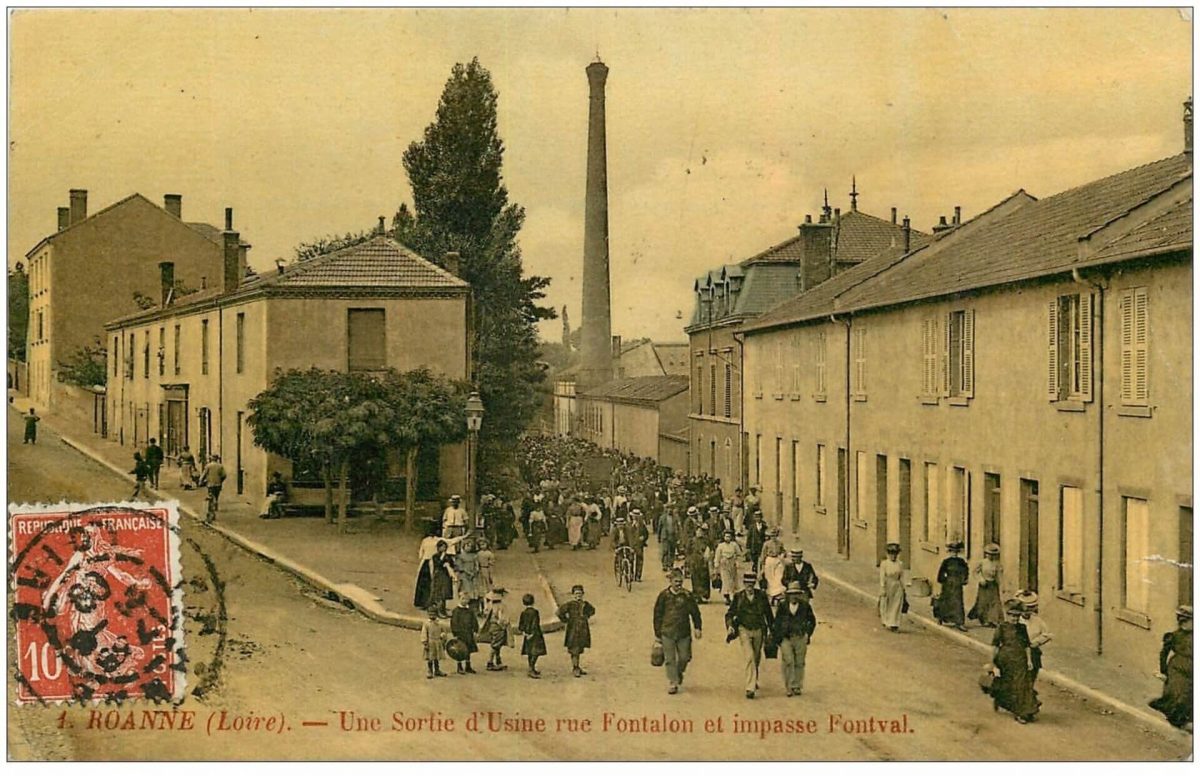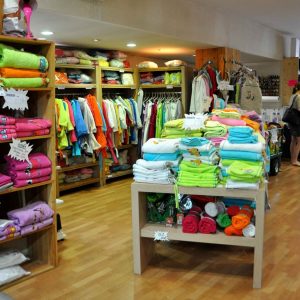The textile activity is part of the DNA of Roanne and the Roanne region. Since the Middle Ages, peasant weavers have been spinning and weaving flax and hemp. Its many rivers are also an asset. They provide essential energy for the operation of textile factories and ideal purity for the dyeing industry. Finally, the boom in the textile industry in Roanne was born from the proximity of the Lyonnais silk workers, who found a qualified workforce in the north of the Loire department.
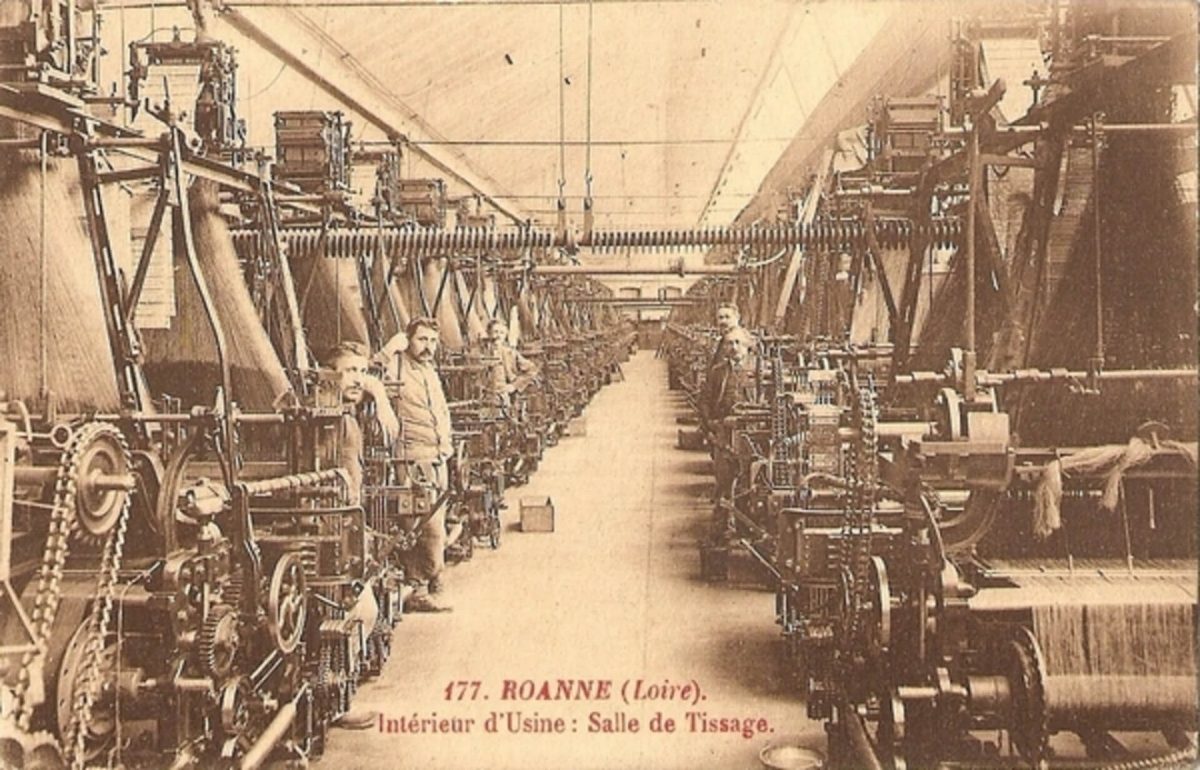
Since then, the tradition has remained, the Roannais freed itself from the tutelage of Lyon. Today, several companies create high quality fabrics that can be found in haute couture houses. Your thirst for shopping is not yet satisfied? Factory outlets are also plentiful and delight bargain hunters.
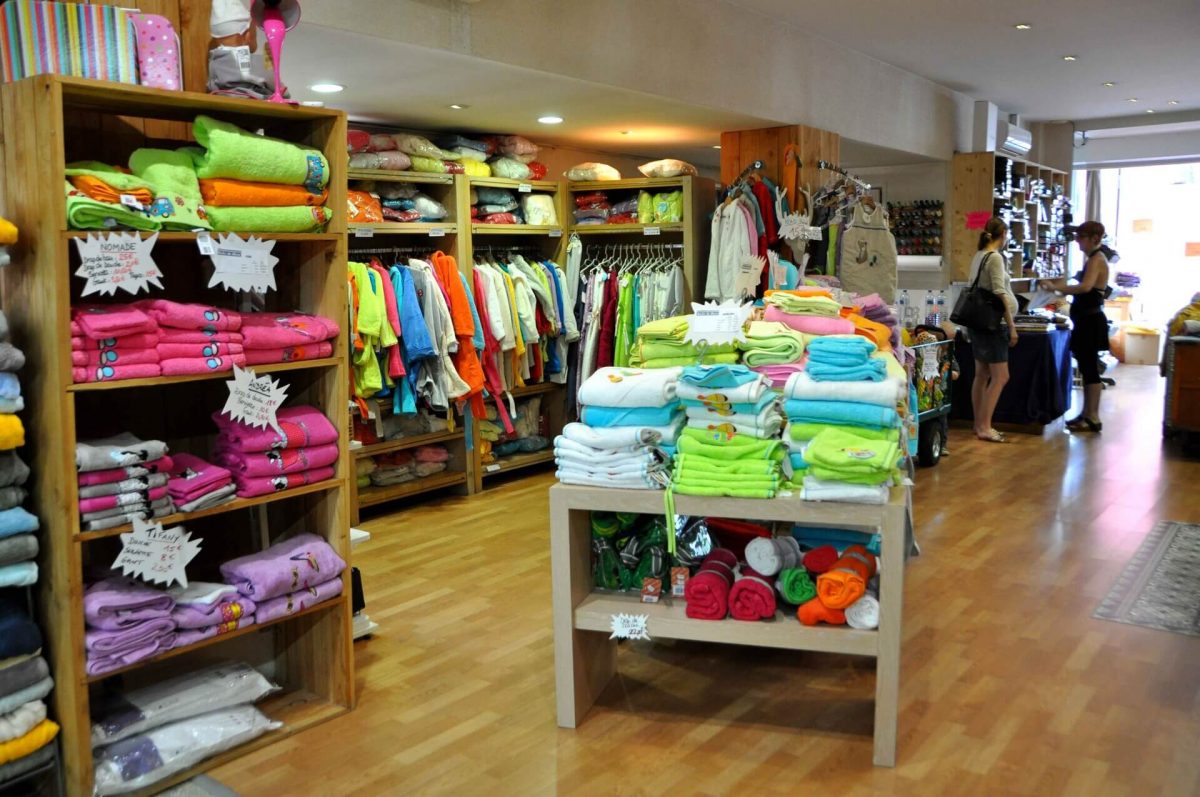
Factory outlets
In the Roannais, several brands offer factory outlets where you will inevitably find good deals. Linens, ready-to-wear clothes for women, men, children, lingerie… don't wait any longer and push open the doors of these boutiques.
Key figures
- In 1900, Roanne was the city of 100 fireplaces. Emile Noirot, a renowned painter from Roanne, has also immortalized them in one of his works. They are the symbol of the wealth and prosperity of the city. As an anecdote, for the construction of the Diderot halls in 1982, the Beluze factory and its chimney were destroyed. The inhabitants of the district, nostalgic, had made a petition to keep the fireplace, symbol of this rich past.
- The city's population doubled between 1866 and 1911: 19 354 inhabitants against 36 697 inhabitants.
- At the end of the XIXe century 10 000 workers work in the Roanne factories.
- At that time, Roanne was the 4e cotton hearth from France.
Roanne, a town marked by weaving
At the beginning of the XIXe century, following the crisis of the canuts in Lyon, the great Lyonnais weavers decided to call upon the workforce of Roanne. Very professional, she knows how to demonstrate great technical skills. It was then that Roanne weaving took off. Roanne becomes a workers' city. New neighborhoods are developing. In 1817, Sébastien Mulsant bought a piece of land where he did not build a factory but a set of small buildings “Les Baraques Mulsant” in which he installed families of weavers who would work for him.
Year after year, activity will increase thanks to the arrival of mechanical trades and the creation of large workshops in the heart of the city. Roanne will then have thousands of trades and workers. The population went from 8 inhabitants in 370 to 1821 in 31!
Imported mainly from China and the United States, cotton will be woven to manufacture work clothes in particular. These solid fabrics will become luxurious with the technique of Vichy fabric. This interweaving of white and colored threads will then create these Vichy squares that we all know. Brigitte Bardot even went so far as to wear this Vichy fabric when she married Jacques Charrier in 1959.
Roanne will become THE national cotton production pole after the annexation of Alsace and Lorraine by Germany in 1870, until then the leading producer of this material!
Roanne entrepreneurs are flourishing. Like Antoine Bréchard who bought the company from his employer, Barthélémy Brison in 1878. He gave new impetus to the weaving industry by introducing the Jacquard loom to Roanne. He became one of the first to create such an important production unit for the cotton industry! His business will have up to 1600 people!
![Sortie d'usine Bréchard à Roanne]()
Bréchard factory outlet in Roanne ![Enseigne Tissages Bréchard à Roanne]()
Tissages Bréchard in Roanne
After having known its heyday, the Roanne weaving industry will unfortunately decline at the end of the XNUMXth century.e century and especially the Second World War. In question ? entrepreneurs are not going to invest enough in their businesses to ensure production. In addition, the various decolonizations have caused the loss of the main export customers.
The mechanization of weaving deprives the countryside of an additional source of income and frees up labor. This workforce is quickly employed in houses in Roanne which are embarking on "wool".
The rise of hosiery
Unlike weaving which consists of weaving threads, hosiery is a knitted stitch. The first factories date from the 1860s and are family workshops which have women knitting on the farm or in the meadows (pilgrims, scarves, etc.), a foreman, often a shopkeeper, distributes the work and collects it.
Thanks to the invention of the “Rachel” mechanical loom in 1880, hand knitting gave way to mechanical knitting, which was much more profitable! It is then customary to say "Whoever buys a trade Rachel becomes rich within the year!" ".
From 1922 to 1954, mechanization and constant demand contributed to strong growth in hosiery. From 25 workshops in 1914, there were 50 houses in 1927 (300 trades, 700 factory workers for a production of 1200 tonnes of sweaters, vests, socks, scarves, etc.) and in 1939, there were 200 houses, 1500 trades and 5000 employees !
![Bonneterie à Roanne]()
Hosiery ![Bonneterie à Roanne]()
Hosiery in Roanne
This strong growth and demand is largely due to the evolution of customs: the mesh gives flexible items, easy to wear, suitable for sport and relaxation.
Renowned companies are emerging such as Cukier, Pauporté, Ferret, Lewinger, Griffon, Devernois, Rhodamel, Desarbre… Many of them have up to 500 workers or rather workers! In addition, hosiery provides "finishing" jobs at home, thus providing work for mothers at a time when very few women work.
The activity rate of the female population is the highest in France and the city no longer providing enough labor, the rural population arrives by bus at the bus station built in 1954 (one of the first in France! ).
After the oil crisis in the 70s, factories closed one by one as a result of too much competition and relocations.
Roanne, a city shaped by textiles
Walking around the city and looking up, we quickly notice that Roanne was shaped by the textile industry: new neighborhoods, workers, have emerged (Mulsant, Clermont). The habitat testifies to it!
Some beautiful "mansions" catch the eye. They are often located near old industrial premises, typical with their "shed", these sawtooth roofs with glass canopies allowing workshops to be lit! It's up to you to find them rue Brison, Boulevard Jules Ferry, avenue Gambetta, rue Emile Noirot, impasse Fontal where the house faces the "workers' city" and the old factories ...
Testimony of this past, some fireplaces are still standing and inserted in beautiful rehabilitations!
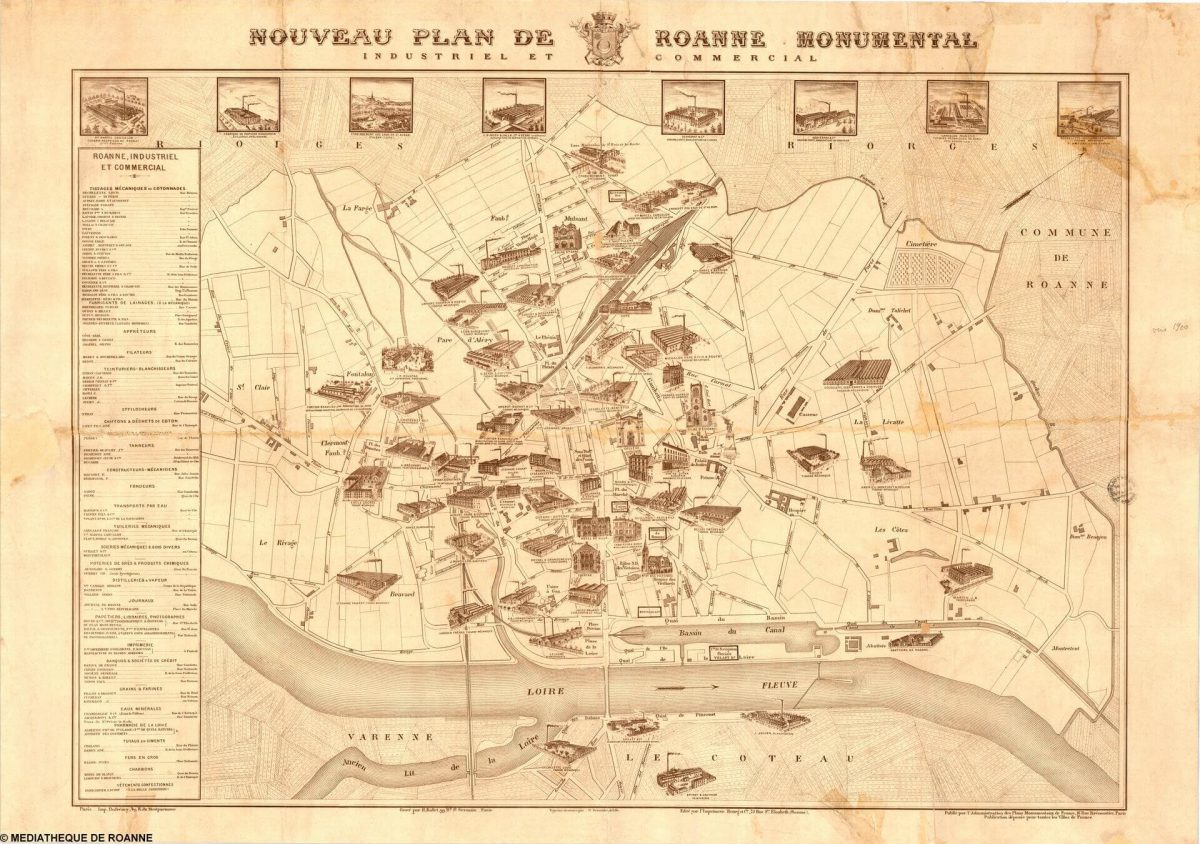
Textiles in Roanne, closely linked to sports
In addition to shaping the city, the textile activity has also allowed the development of sport in Roanne. Concerned about the leisure activities of their employees, the managers of large hosiery companies have helped to create and develop major sports clubs in Roanne:
- Henri Rhodamel and basketball with the Choir of Roanne, twice champion of France! He will even have the Palais des Sports built on rue Albert Thomas to house his team's matches!
- Claude Devernois created the Roanne rugby union club and participated in the creation of the French rugby union federation
- Rugby Union: During the presidency of Raoul Griffon between 1945 and 1965, the club will experience hours of glory by being classified in 2e and even 1st division (equivalent to the current Top 14) for 6 years. He was also president of athletics in Roanne.
Note: the Griffon stadium is right next to the factory of the same name!
And we must not forget the football developed in the Mâtel district on the initiative of the executives of another large factory related to textiles: France Rayonne!

DID YOU KNOW ?
The textile industry also includes initiatives such as that of Elysée Crouzet, who in 1919 created the ARCT (Textile Construction Workshops) for the manufacture of machines for texturing synthetic threads and will have 2000 employees!
The Marcel, made in Roanne

It's hard to say that Marcel is a Roanne invention but what we do know is that Marcel Eizenberg gave birth in 1949 to Etablissements Marcel in Roanne. He would then have created a sleeveless cotton men's underwear. Legend has it that this undershirt was baptized by wholesalers in Paris with the first name of its manufacturer, Marcel.
Nowadays, a business leader is giving back his letters of nobility to Marcel de Roanne: Thomas Sardi. At the head of Marcel Knitwear, he has only one idea in mind: to make Marcel the new high-end emblem of Roanne.
Big sales of the year
For bargain hunters and shopaholics, don't miss the many factory sales held throughout the year. This is a perfect opportunity to fall in love with new clothes at reduced prices and to revamp your wardrobe.
- Big sales at the Scarabée - ready-to-wear in Riorges, in April and October
- hunter - ready-to-wear in Riorges, in April and November
- Devernois & Yves Delorme - ready-to-wear, at Le Coteau in April and November
- Mado and the others - ready-to-wear in Neaux, in April and November
- Apple pink - ready-to-wear in Riorges, in June and October
- Griffon & Mervil Christian Cane Bonnes Affaires Marathon - ready-to-wear in Roanne, in March, June and November
- Rodam and Carole Gray - ready-to-wear in Roanne, in June and November
- Velvet from the Bouton Renaud factory in Saint-Just-en-Chevalet, in December



